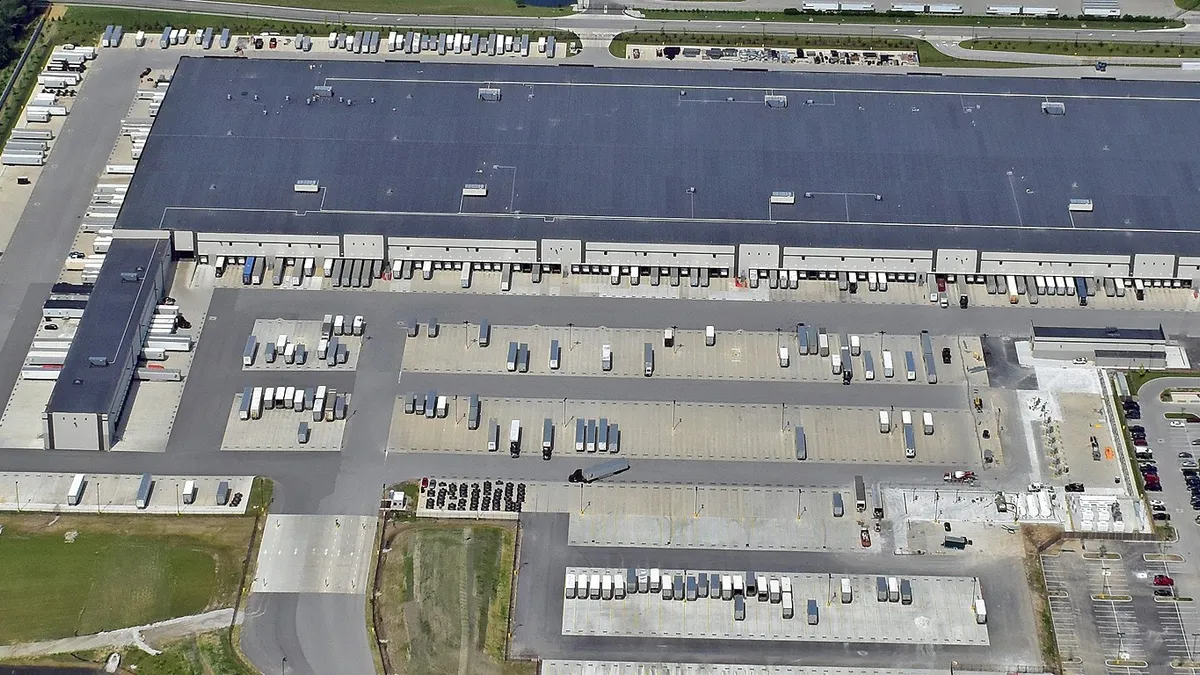Dive Brief:
- UPS' latest superhub, an 893,000-square-foot facility in Plainfield, Indiana, is now operating at full capacity after beginning operations in 2017 when construction was still underway, the company announced in a press release this week.
- At this superhub, along with others in Atlanta, Dallas, Phoenix and Salt Lake City, UPS brings in packages from around the country and the world, sorts them and then loads them onto tractor trailers that will haul them off to the local UPS facility to handle final delivery. Some of the superhub locations, including this Indiana location, also handle local area delivery. There will be 275 local delivery trucks based at this Indiana facility, Kim Krebs, a spokesperson for UPS, told Supply Chain Dive.
- These hubs are highly automated and have increased productivity and efficiency by a factor of 30% to 35% when compared to less automated locations. The Indiana facility will be able to process about 58,000 packages per hour, Krebs said.
Dive Insight:
Three attributes separate these superhub locations from traditional UPS facilities: size, speed and automation. The buildings are 800,000 to 1 million square feet and can handle tens of thousands of packages per hour with the help of advanced technology.
All UPS suberhubs are currently processing packages, but some are still undergoing construction, Krebs said.
UPS uses a six-sided scanner to determine the final destination for the packages heading through the superhub and then UPS' network planning tool (NPT) handles the package's routing as it moves through the facility. The NPT uses advanced analytics and artificial intelligence to reroute packages based on weather and other variables to ensure it reaches its final destination as quickly as possible. The packages are still moving through the superhub when these decisions are made, Krebs said.
The NPT isn't operational in all UPS locations yet, she said.
Superhubs do not replace older UPS facilities, but rather add capacity to UPS' operation as the logistics company works to build out a network meant for the modern demands of e-commerce fulfillment.
Last year, UPS added 5 million square feet to its operations globally to help handle the hundreds of thousands of packages moving through its buildings every hour. This year, it plans to add even more capacity with 20 new and retrofitted facilities around the world, Krebs said. This will help reach the company's goal to increase sortation capacity by 350,000 pieces per hour in the U.S. before the 2019 holiday season.














